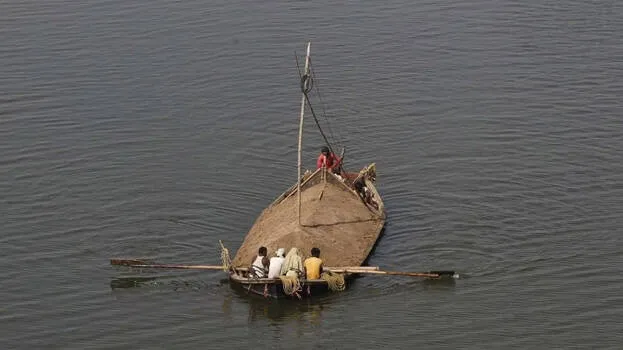

A large amount of sand has accumulated in all the small and big rivers of the state, reducing their water capacity significantly. As the summer heats up, the finance department is thinking about ways to increase revenue by utilizing the sand reserves in the rivers. However, there are only discussions, and the project is not progressing at all. Since mud is mixed with sand, it will cost a lot to extract sand through scientific methods and use it for construction purposes. This is what keeps many away from this field. A decade and a half ago, when Thomas Isaac was the finance minister, a proposal for sand dredging was included in the budget. It was estimated that at least a thousand crore rupees would be generated through this. Sadly, nothing has happened.
The Left Front government is still considering utilizing the sand reserves in the dams. Since this is the right time to extract sand, the government should take action to move forward with the proposal. Periodic removal of soil and silt is essential for the survival of rivers and dams. The Revenue Department also stated this in the sand audit conducted in the rivers of the state recently. Sand mining will be beneficial in avoiding the possibility of floods and maintaining the natural storage capacity. The largest river, Bharathapuzha, is ahead in sand reserves as well. At least 211 lakh cubic meters of sand can be extracted from Bharathapuzha. Currently, many people are removing soil from Bharathapuzha illegally and without anyone noticing.
Periyar comes in second place in this category. The study found that 9.78 lakh cubic meters of sand can be extracted from this river. Out of the 36 rivers in the state that have been audited, the government has accepted the audit information of 33. Since there is no mining potential in Neyyar and Karama rivers, which have low sand reserves, the existing ban on sand extraction will continue. Like rivers, the storage capacity of dams is decreasing every year due to the accumulation of sand and silt. This is a threat that endangers the very existence of dams. Some dams are unable to collect even half of their storage capacity even during heavy monsoons. It is common for dams to dry up along with rivers before the onset of summer, causing misery to those who depend on them for drinking water and agriculture.
It should be remembered that reservoirs will be beneficial to the country and the locals only if the attitude that 'nothing needs to be done after the dams are built' changes. The land adjacent to the banks of many dams has been converted into agricultural lands. This trend can also be seen in the case of rivers. Such encroachments and agriculture must be prevented to maintain the natural integrity of rivers and other places and increase their storage capacity.
It would be beneficial if mining activities could be started before the onset of the monsoon season. It does not seem that this will be possible with normal government measures. Special measures will be required. The government should think about that.